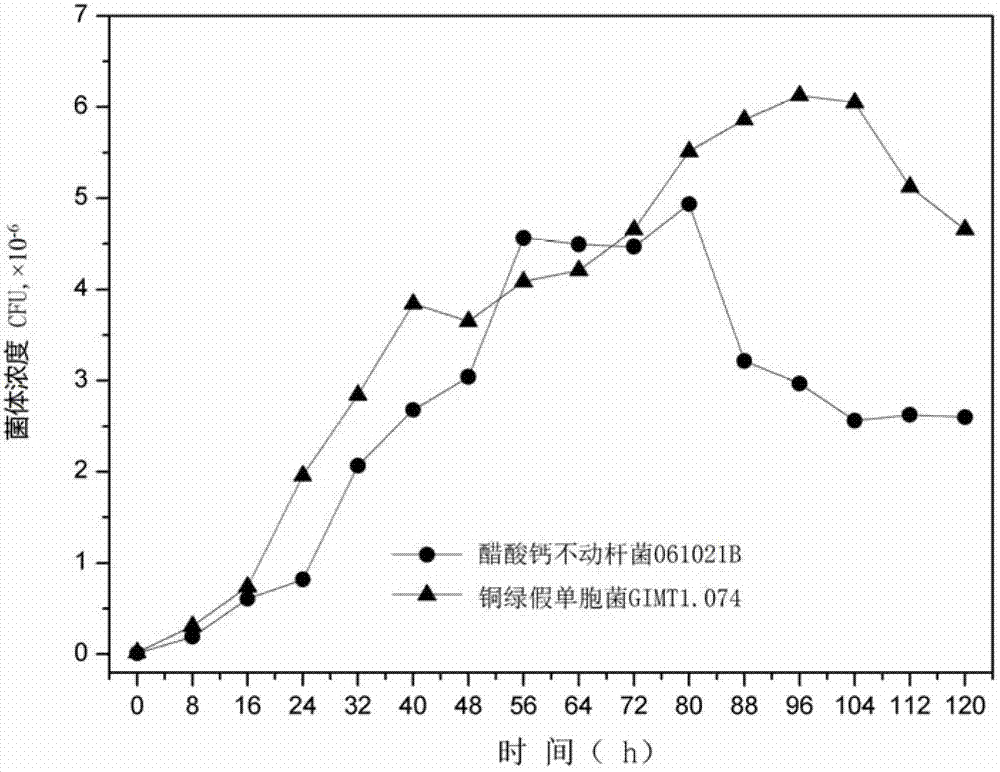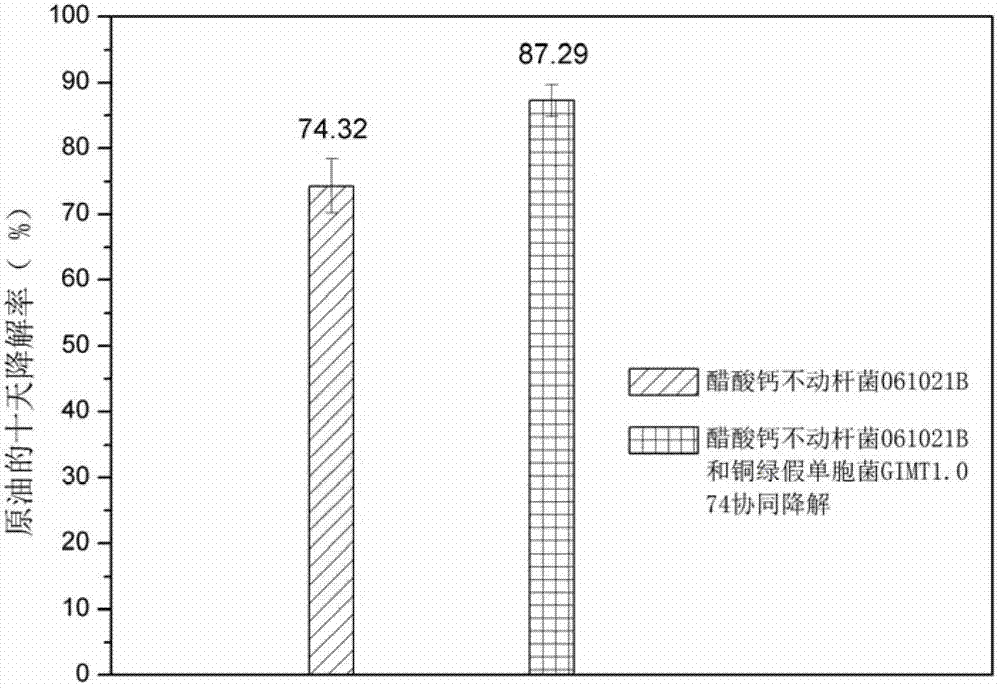Method for studying synergistic effect of surfactant producing bacteria on petroleum degradation
A surfactant and synergistic technology, applied in the field of synergistic effect of surfactant producing bacteria on petroleum degradation, can solve the problems of high cost, secondary pollution, unsatisfactory effect, etc.
- Summary
- Abstract
- Description
- Claims
- Application Information
AI Technical Summary
Problems solved by technology
Method used
Image
Examples
Embodiment 1
[0027] Cultivation method for degrading petroleum pollutants by using mixed bacterial flora
[0028] The formula is sodium nitrate 0.5g / L, potassium dihydrogen phosphate 0.5g / L, potassium dihydrogen phosphate 0.5g / L, ammonium sulfate 2g / L, NaCl3g / L, magnesium sulfate 0.5g / L, trace elements 10mL / L , after adjusting the pH to 6.5 in the inorganic salt medium, after adding 5mL of crude oil and the initial OD 600 Acinetobacter calcium acetate 061021B with a concentration of 0.01 was placed in a constant temperature incubator at 30°C and 200rpm to carry out the degradation experiment of petroleum pollutants. After 10 days of degradation, use n-hexane to extract the undegraded crude oil in the medium, and use the specific gravity method to compare The change of oil weight before and after degradation, the experimental results show that the degradation rate of crude oil is 61.27%.
Embodiment 2
[0030] Cultivation method for degrading petroleum pollutants by using mixed bacterial flora
[0031] The formula is sodium nitrate 1g / L, potassium dihydrogen phosphate 1g / L, potassium dihydrogen phosphate 1g / L, ammonium sulfate 3g / L, NaCl 5g / L, magnesium sulfate 1g / L, trace elements 10mL / L, adjust the pH to After adding 5mL of crude oil to the inorganic salt medium after 7.0 and the initial OD 600 Acinetobacter calcium acetate 061021B with a concentration of 0.01 was placed in a constant temperature incubator at 30°C and 200rpm to carry out the degradation experiment of petroleum pollutants. After 10 days of degradation, use n-hexane to extract the undegraded crude oil in the medium, and use the specific gravity method to compare The change of oil weight before and after degradation, the experimental results show that the degradation rate of crude oil is 74.32%.
Embodiment 3
[0033] Cultivation method for degrading petroleum pollutants by using mixed bacterial flora
[0034] The formula is sodium nitrate 1.5g / L, potassium dihydrogen phosphate 1.5g / L, potassium dihydrogen phosphate 1.5g / L, ammonium sulfate 5g / L, NaCl7g / L, magnesium sulfate 1.5g / L, trace elements 10mL / L , after adjusting the pH to 7.5 in the inorganic salt medium, after adding 5mL of crude oil and the initial OD 600 Acinetobacter calcium acetate 061021B with a concentration of 0.01 was placed in a constant temperature incubator at 30°C and 200rpm to carry out the degradation experiment of petroleum pollutants. After 10 days of degradation, use n-hexane to extract the undegraded crude oil in the medium, and use the specific gravity method to compare The change of oil weight before and after degradation, the experimental results show that the degradation rate of crude oil is 54.91%.
PUM
 Login to View More
Login to View More Abstract
Description
Claims
Application Information
 Login to View More
Login to View More - R&D
- Intellectual Property
- Life Sciences
- Materials
- Tech Scout
- Unparalleled Data Quality
- Higher Quality Content
- 60% Fewer Hallucinations
Browse by: Latest US Patents, China's latest patents, Technical Efficacy Thesaurus, Application Domain, Technology Topic, Popular Technical Reports.
© 2025 PatSnap. All rights reserved.Legal|Privacy policy|Modern Slavery Act Transparency Statement|Sitemap|About US| Contact US: help@patsnap.com


